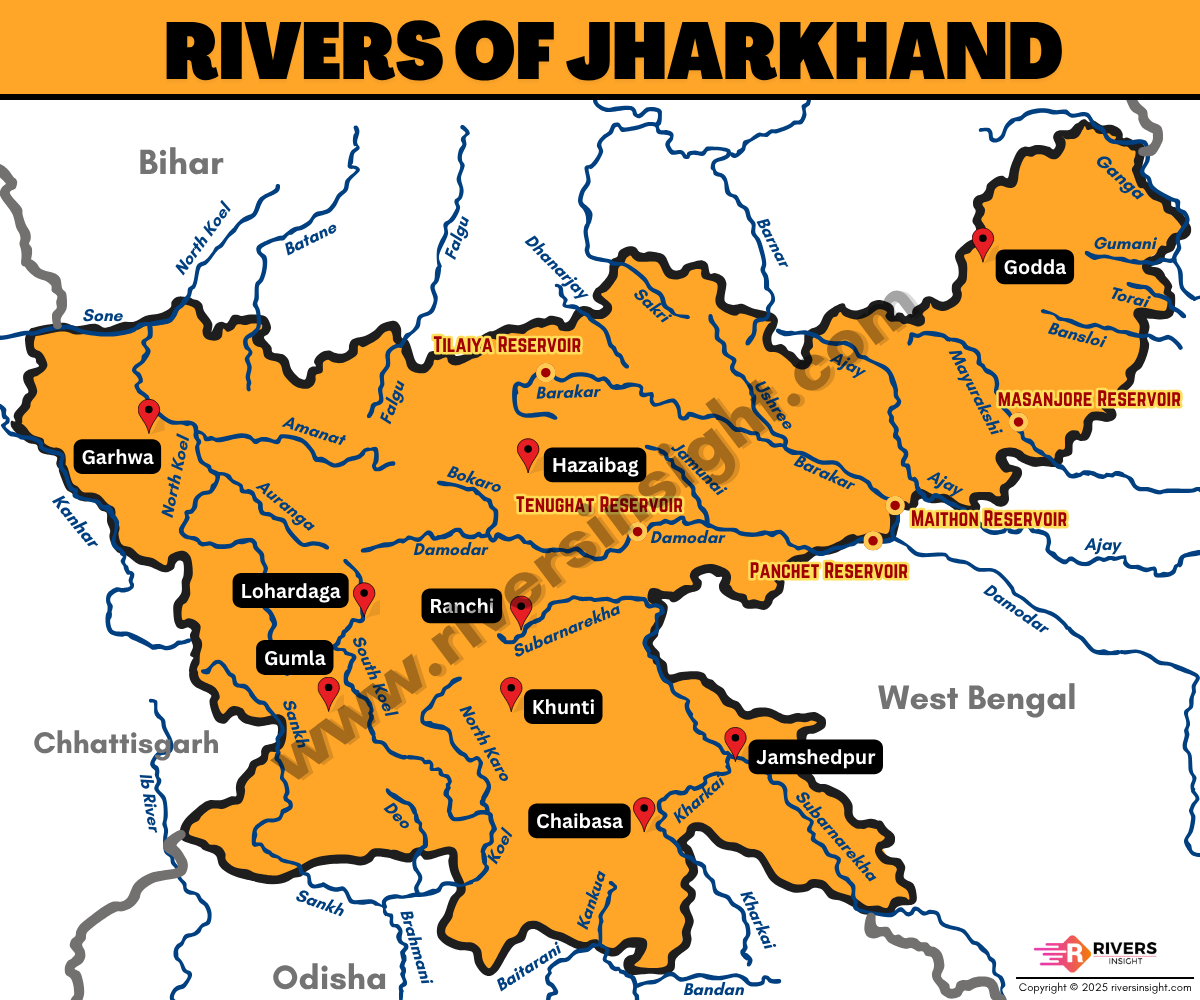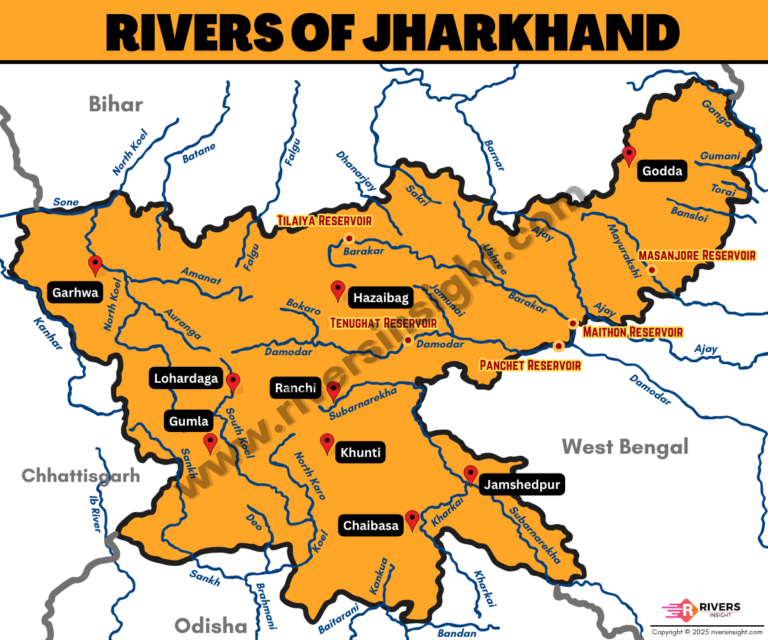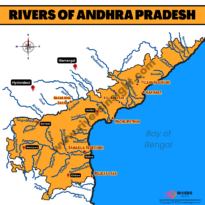Rivers of Jharkhand: List of Major & Minor Rivers with Map
The rivers of Jharkhand originate mainly from the Chotanagpur Plateau and flow through forests, hills and valleys. Most of these rivers move eastward or northward and later join major river systems like the Ganga, Subarnarekha and Brahmani.
Jharkhand is divided into two main river basins:
- The Ganga Basin in the north
- The Subarnarekha and Brahmani Basins in the south and east
Major rivers of Jharkhand include the Damodar, Subarnarekha, Koel, Barakar and Kharkai. Along with them, smaller rivers like the Ajay, Lilajan, Amanat and Kanchi also play a key role in the state’s drainage system.
This article provides a complete overview of the rivers of Jharkhand along with map with details about their origin, flow direction, tributaries and where they meet larger rivers.
Table of Contents
Important Rivers of Jharkhand
1. Damodar River
- Origin: Khamarpat Hill, Palamu district, Jharkhand
- Length: ~592 km (approx. 300 km in Jharkhand)
- Drainage: Empties into the Hooghly River in West Bengal
- Tributaries in Jharkhand: Barakar, Konar, Bokaro, Jamunia
- Notable Fact: Known as the “Sorrow of Bengal” due to past flooding; now controlled by DVC dams.
2. Subarnarekha River
- Origin: Near Ratu, Ranchi district
- Length: ~395 km
- Drainage: Bay of Bengal (via Odisha)
- Major Tributaries in Jharkhand: Kharkai, Kanchi, Karkari, Raru
- Special Note: Flows through Jharkhand, West Bengal, and Odisha.
3. Koel River System
Divided into two branches:
a. North Koel River
- Origin: Netarhat plateau, Latehar district
- Length: ~360 km
- Drainage: Joins Son River near Haidarnagar
- Tributaries: Auranga, Amanat, and Burha
b. South Koel River
- Origin: Near Lohardaga district
- Length: ~290 km
- Drainage: Merges with the Sankh River to form the Brahmani River in Odisha
4. Barakar River
- Origin: Padma, Hazaribagh district
- Length: ~225 km
- Drainage: Major tributary of Damodar River
- Dams: Maithon and Panchet Dams
5. Kharkai River
- Origin: Mayurbhanj hills (Odisha–Jharkhand border)
- Flows Through: Chaibasa and Jamshedpur
- Joins: Subarnarekha River at Jamshedpur
- Tributaries: Sanjai, Tatagarh, Karanjia
6. Swarnarekha River
Includes small but important rivers like:
- Kanchi River
- Karkari River
- Raru River
These originate within Ranchi and nearby districts and merge into the Subarnarekha River system.

List of Other Rivers of Jharkhand
| River Name | Origin Location | Joins With / Flows Into |
|---|---|---|
| Ajay River | Dumka/Deoghar district | Bhagirathi River (West Bengal) |
| Lilajan River | Hazaribagh Plateau | Mohana River (forms Falgu River) |
| Mohana River | Chatra district | Joins Lilajan to form Falgu |
| Amanat River | Palamu district | North Koel River |
| Auranga River | Latehar district | North Koel River |
| Burha River | Netarhat Plateau | North Koel River |
| Tatagarh River | Chaibasa region | Kharkai River |
| Sanjai River | West Singhbhum district | Kharkai River |
| Kanchi River | Ranchi Plateau | Subarnarekha River |
| Raru River | Ranchi district | Subarnarekha River |
| Karkari River | East Singhbhum district | Subarnarekha River |
| Bokaro River | Hazaribagh Plateau | Damodar River |
| Konar River | Hazaribagh district | Damodar River |
| Jamunia River | Hazaribagh district | Damodar River |
| Haro River | Deoghar/Giridih region | Local tributary (Ajay system) |
Quick Facts – Rivers of Jharkhand
- Longest River in Jharkhand: Damodar River
- Main East-flowing River: Subarnarekha
- Main West-flowing River: North Koel
- Important River Projects: Maithon Dam, Panchet Dam, Konar Dam
- Key Cities on Rivers: Ranchi (Subarnarekha), Jamshedpur (Subarnarekha & Kharkai), Dhanbad (Damodar)




